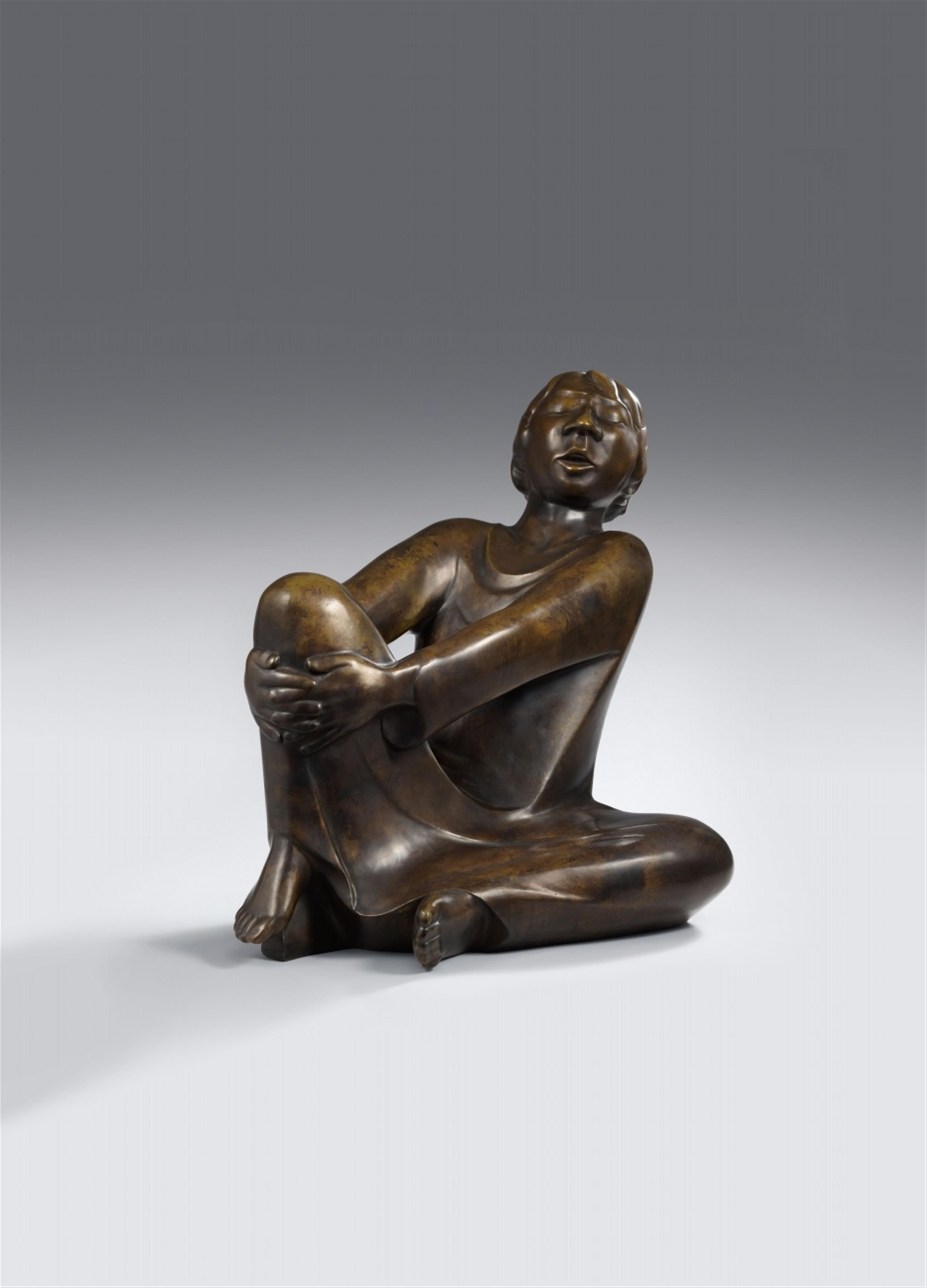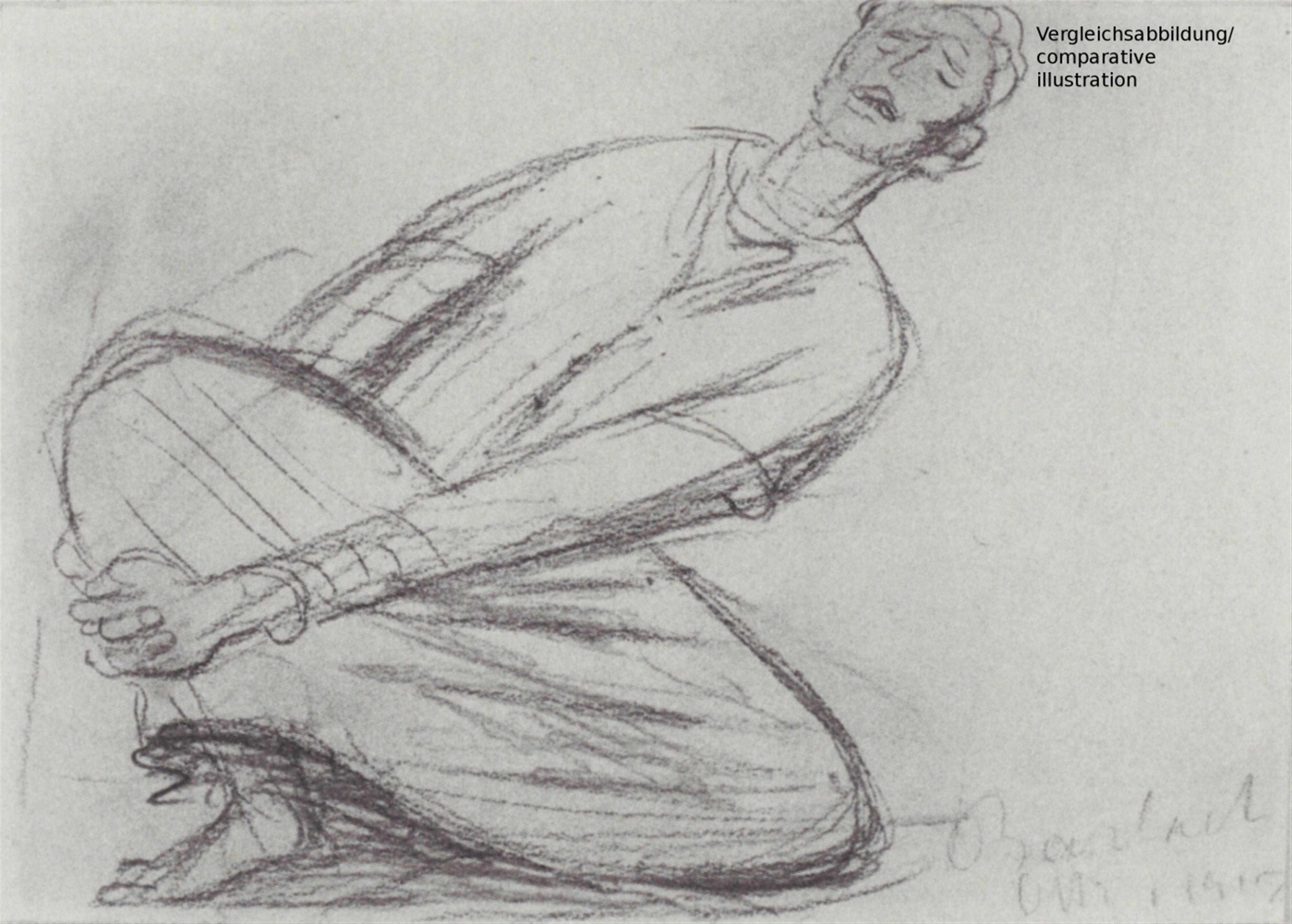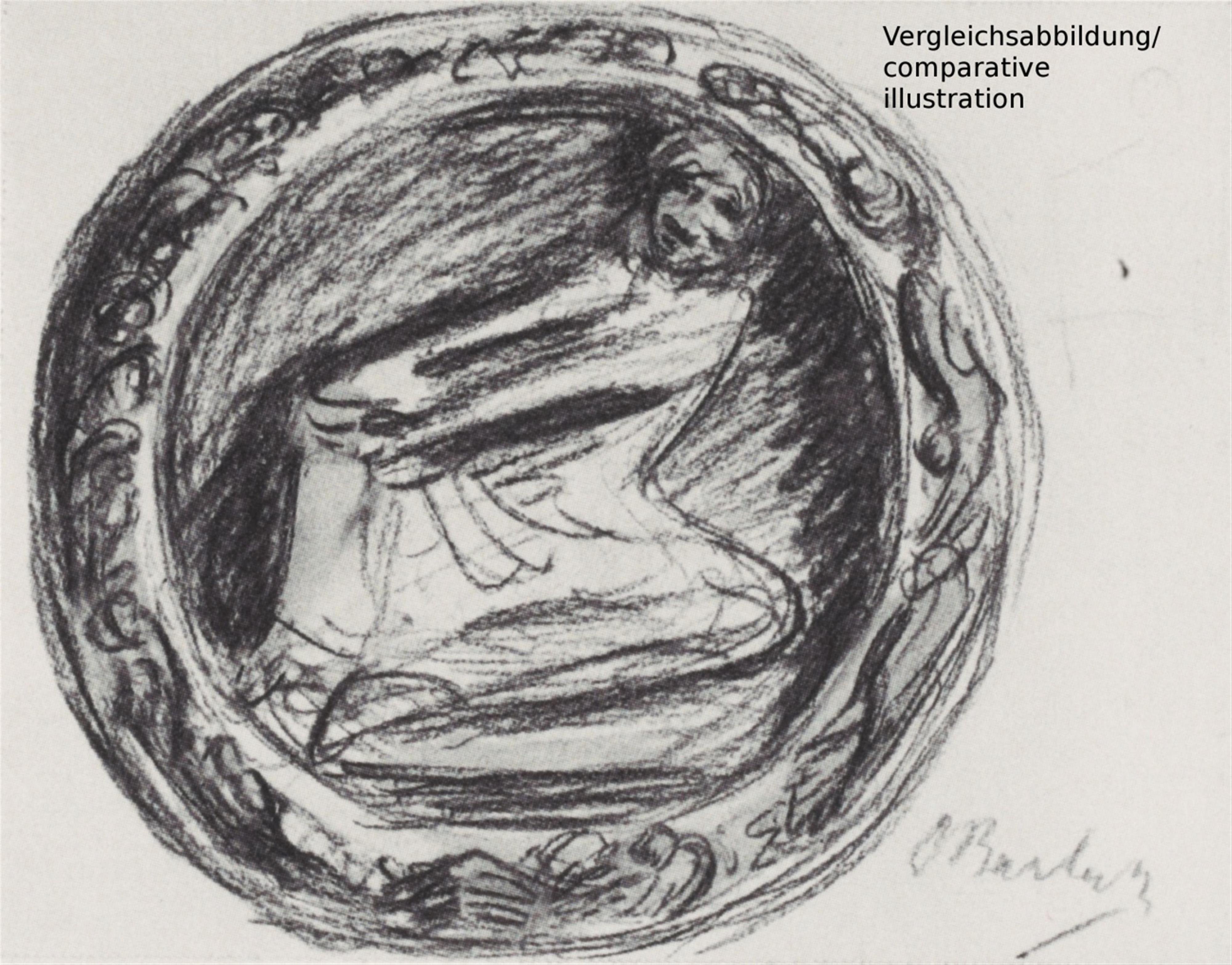Ernst Barlach
Der Singende Mann
1928
Bronze Height 49.3 cm Signed 'Barlach' and with foundry mark "H. NOACK BERLIN" to the reverse on the base beneath the right foot. A posthumous cast made after 1938 (according to Laur, 38 unnumbered posthumous bronze casts are known, as well as three zinc casts made in 1940). - With a bronze coloured, slightly shimmering and lively patina, partially highlighted.
The motif of the “Singender Mann” ultimately goes back to 1912, when Ernst Barlach sketched it for the first time - with the figure's eyes already shut (Wittboldt/Laur 1192; Schult III 966, charcoal drawing). The artist essentially develops the figure out of two dynamically converging, elongated ellipses: it is fascinating to trace these in the spatial organisation of the much later sculpture. Here the geometry and latent tension of the form derive - from the very beginning - from the natural attitude of the singer's body: leaning backwards in order to broadly expand his chest, the head, the slanted upper torso and the outstretched arms form an axis that is countered by the axis of the lower torso, between the leg lying spread out on the ground and the sharp angle of the raised knee.
The “Singender Mann” also appears in two graphic relief studies of 1915 and 1918, including “Singender Mann im Rund” (Wittboldt/Laur 1588; Schult III 1284, 1918, Nachlaß Güstrow). Barlach harmoniously adapts the motif to a circular form. This also seems indicative in terms of a preliminary formulation of the final proportions and nature of the sculpture, of its centring, of the calm it radiates and of the elementary, suggestive energy from which the “tone” transported by the human voice seems to flow.
Barlach has succeeded in capturing the man and his song in a timelessly expressive form and in rendering the transcendental nature of music tangible in his visual art. This also explains the immense popularity of the sculpture, which sold out only shortly after being offered in the Flechtheim edition and which was released in new casts from the post-war period until into the 1970s.
Catalogue Raisonné
Laur 432/2; Schult I, 343
Provenance
Acquired in the German art market in the 1970s; Private possession, North Rhine-Westphalia
Literature
i.a.: Ernst Barlach, Ein selbsterzähltes Leben, 1928, pl. 69; Carl Dietrich Carls, Ernst Barlach. Das plastische, graphische und dichterische Werk, Berlin 1931, p. 45, illus. and Berlin 1950 p. 61, illus.; Friedrich Schult (ed.), Ernst Barlach. Sechsundvierzig Bilder. Potsdam 1950, pl. 40; Anita Beloubek-Hammer, Ernst Barlach, Plastische Meisterwerke, Leipzig 1996, p. 116. f.; Helga Thieme, Ernst Barlachs Skulptur "Der singende Mann" in der Ausstellung "Neue deutsche Kunst", Oslo 1932, in: Exhib. cat. Kunsthalle Rostock, Ernst Barlach, Artist of the North, Hamburg/Güstrow 1998, p. 310 ff.; Peter Thurmann, Zwei Holzbildwerke von Ernst Barlach und der Kulminationspunkt seiner Bildhauerkunst: "Der Einsame", "Der Mann im Stock" and "Der Rächer", in: Uwe Schneede (ed.), Entdeckungen in der Hamburger Kunsthalle, Essays zu Ehren von Helmut R. Leppien, Hamburg 1999, p. 60-64; Eva Caspers, Der singende Mann, in: Ernst Barlach Haus Hamburg, Munich 2000, p. 93 ff. colour illus. p. 94/95.
Exhibitions
i.a.: Berlin/Düsseldorf 1930 (Galerie Flechtheim), Bronzen von Ernst Barlach, cat. no. 19; Dresden 1931 (Galerie Ernst Arnold), Bronzen von Ernst Barlach; New York 1931 (Museum of Modern Art); Oslo/ Kopenhagen/ Cologne 1932, Nyere Tysk Kunst, cat. no. 6; New York 1939 (Museum of Modern Art), Art in Our Time; Hamburg 1977 (Ernst Barlach Haus), Stiftung Hermann F. Reemtsma, Plastiken, Handzeichnungen und Autographen, cat. no. 53; Antwerp 1994/1995 (Koninklijk Museum voor Schone Kunsten), Ernst Barlach, cat. no. 187, illus.; Bergen/ Güstrow 2000 (Bergen Kunstmuseum/ Ernst Barlach Stiftung Güstrow), Ernst Barlach, Ein Graphiker und Bildhauer des deutschen Expressionismus, no. 92






